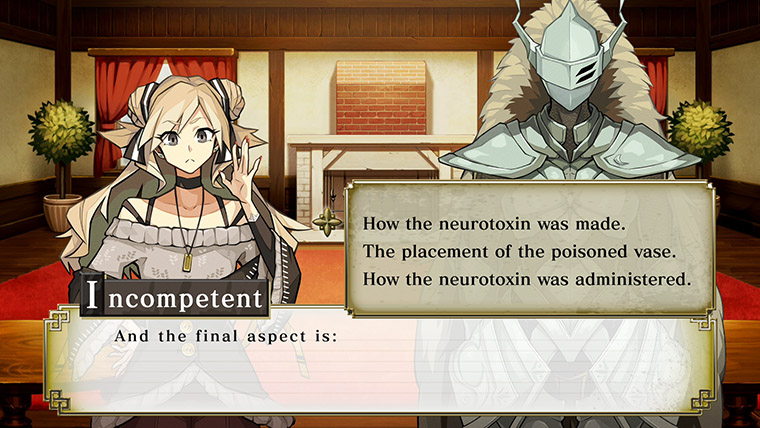The “Death Game”, a subgenre within Visual Novels, seems to grow more and more popular as titles such as Danganronpa gain popularity. It’s not hard to understand why, with its mystery, terror, and exciting revelations. NISA’s Process of Elimination is their own take on the Death Game genre.
Whose hands are bloodied?
The Quartering Duke, a serial killer who asks viewers to vote on whether to murder those they believe are unworthy to live or not, is rapidly gaining cult status. As a result, society has descended into chaos and many people are killing each other for various reasons. The goal is to find the Quartering Duke, stop their madness and restore law and order.
Wato is a young high-school student who has been assigned to uncover the truth about this bizarre series of events. He is now working with a colorful group of experienced and talented detectives, who use pseudonyms to indicate their peculiarities. You get the idea. “Armor detective”, “Techie” or “Workaholic”, etc. Wato, a rookie detective who is yet to discover his true talent, gets the humiliatingly simple title “Incompetent Detective “.

The main mystery of Process of Elimination never really grabbed me, despite the fact that the story put some good pieces into place. Although the story is surprisingly dull, it does have some interesting philosophical concepts presented by the killer. You can predict most of the twists and they are almost all tropes that you have seen done better in other games. It’s fine to play the game conventionally but it lacked identity. The dialogue is a mess and does not help.
The writing is unable to create suspense, and instead focuses on each detectives’ gimmick. Wato is the only one who feels like a character. The characters are more like caricatures than real people, as they represent an idea rather than being individuals with agency and motivation. When I can’t invest in them as individuals, it is hard for me to be invested in their lives.
Investigation Hour
It’s not an adventure game without spending a lot of time investigating the surrounding scenery. Process of Elimination is not a traditional point-and click adventure, but rather a quasi-tactical RPG. Imagine Disgaea, or Fire Emblem. You’ll be able to drag characters around a number of different maps using their skills and insight to solve the puzzles that are found in each chapter. It’s the best part of Process of Elimination. I almost feel like it makes the cast of characters worthwhile. While it may sound good, the story is a complete mess.
The grid that was used to navigate around the map is something I found difficult to read. The squares that indicate each area are difficult to read, and I often found myself accidentally moving a character into a place where I had not intended. The fact that character movements cannot be reverted or cancelled makes this problem worse. This is especially problematic given how few turns are available to finish a case.
The issues are excusable, but the real problem is that this mode just doesn’t work. The limited number of chances to solve the case was supposed to create tension. It doesn’t. It’s not in the writing, as the solutions are usually very simple to figure out. The coveted “eureka!” moment also never occurred because I always felt like the answers were right there. The mechanics of this mode are not engaging, despite its ease. The right characters can help piece together the larger picture by deducing things from each other.
It’s a new idea to present the investigative process in a RPG strategy format. I would like to refine it further. However, I am hesitant to say that the novelty of this game is worth the price, particularly when it comes to the otherwise excellent story pacing. This game lacks the sense of agency that is characteristic of strategy RPGs.

Art and Sound
The overall presentation of Process of Elimination is mixed and I am left with a conflicted feeling. The character designs and artwork are of a high quality. Each character has an individual design which conveys the skills they possess and any personality that may exist. Their distinctive art style also gives the Death Game a pleasant aesthetic, reminiscent of the mystery manga and comics that inspired the genre. The rest of the game’s aesthetic is a testament to this. The CG and background drawings have a good level of quality but lack cohesion. Some assets may look absurd or have a noticeably poorer quality. This can be done intentionally or not, but it’s a sure way to ruin the mood.
I’m less unsure about my feelings regarding the voice-acting and music. It’s safe to say that I dislike both. The Japanese dubbing is sub-par, and there’s no English version. The voice acting was not bad but I didn’t find it engaging. The voice acting is lacking in inflections or tone changes that match the gravity of any given situation. The music was forgettable in general. Some of the music I may have hummed during play but none of it stuck with me.